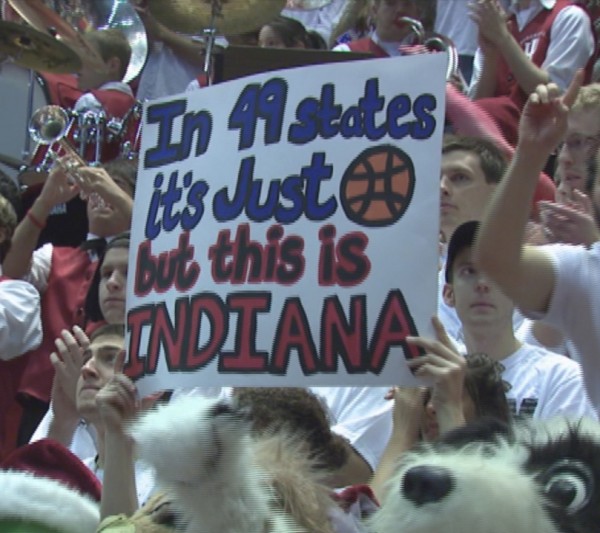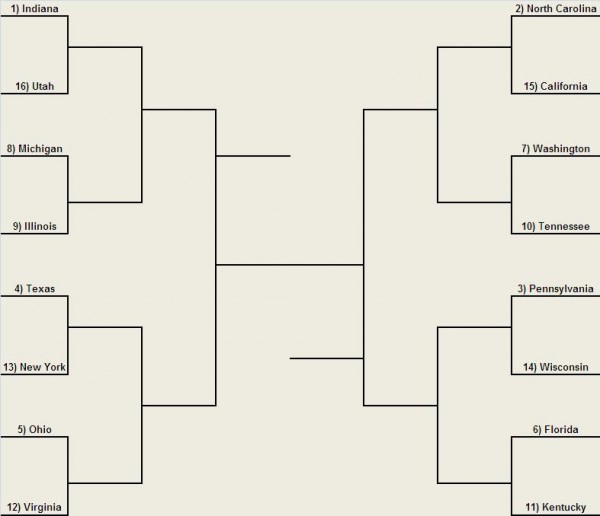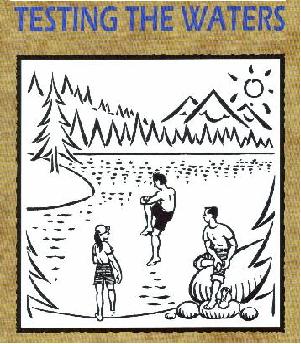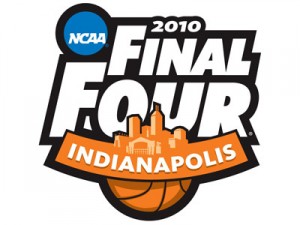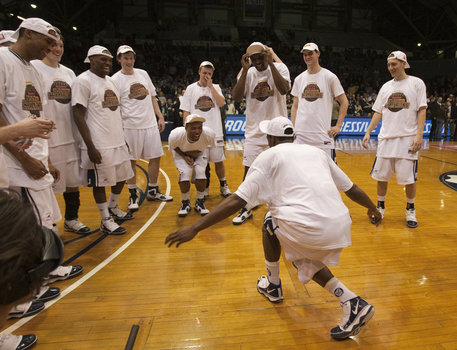The RTC Big Four State Tournament: First Round
Posted by rtmsf on September 1st, 2010A few weeks ago, the four major college basketball programs in the great state of Indiana announced that they would be starting an annual event called the Crossroads Classic, pitting each school against one of its other state rivals (Indiana, Purdue, Notre Dame and Butler) in an annual basketball orgy of Hoosierness. We here at RTC loved this idea, and immediately started thinking of other states in the union who could put on a similarly extravagant annual show of hoops. We were about 99.7% finished with our research when Matt Snyder of Fanhouse published this piece listing the top twenty states that could hold similar in-state classics, causing us to scramble to check the integrity of our passwords (“RTC” doesn’t cut it?) and servers throughout the network.
Seriously, though, Snyder did a great job with the idea; he just beat us to the punch with it. So we went back to the drawing board and thought about ways to use our research in a constructive way that didn’t rip off the Fanhouse post. What we came up with is what we’re calling the 2010 RTC Big Four State Tournament. Here’s how it works.
-
Similar to the Fanhouse post, we picked the top four programs in each of the 33 states (including DC) with at least that many D1 universities.
-
We then chose the top sixteen states based on the current status and power of those four programs within each state.
-
Next, we chose a starting lineup “dream team” of players from those programs in each state, thinking about how to best integrate them by position (three guards & two bigs; or vice versa).
-
We also chose two subs — one guard and one big man — as well as a head coach.
- We limited each school to two starters and one bench player for a maximum of three per team (sorry, Duke). We also made sure to include at least one player from each of the four chosen programs (hi, Seattle).
-
Finally, we seeded the sixteen teams into our bracket and analyzed the matchups. We encourage you to use the polls below to do likewise.
Which state do you think has the strongest cadre of players from among its Big Four programs? Here’s our bracket:
We’ll analyze the left side of our bracket today, and the right side tomorrow. Make sure to put your choices in the appropriate poll box.
#1 Indiana vs. #16 Utah
The most lopsided first round battle pits top seeded Indiana against a Utah squad filled with mid-major flavor. For Utah to avoid embarrassing themselves, they’ll need a heroic effort from elite scorer and potential first team All-American Jimmer Fredette. Much like BYU was vulnerable on the rare occasion when Fredette didn’t deliver, this Utah team void of talent from top-shelf Division I programs will need their do-everything point guard to put on his Superman cape. We suspect Fredette will keep Utah competitive for most of the first half. Tai Wesley is crafty enough to lure Matt Howard into foul trouble and, given the season Weber State just concluded, their representatives are far from slouches. In a near carbon copy of BYU’s second round contest with Kansas State, though, it would be a surprise if Fredette didn’t wear down under the intense man-to-man defense of Shelvin Mack and the common double team. Because of our conditions for picking these teams, sure, but an Indiana team loaded enough to bring a talent like JaJuan Johnson off the bench isn’t going to lose to a primarily one-man squad. The Hoosier State representatives pull away and win by 20+.
RTC Choice: Indiana 84, Utah 62.
#4 Texas vs. #13 New York





























